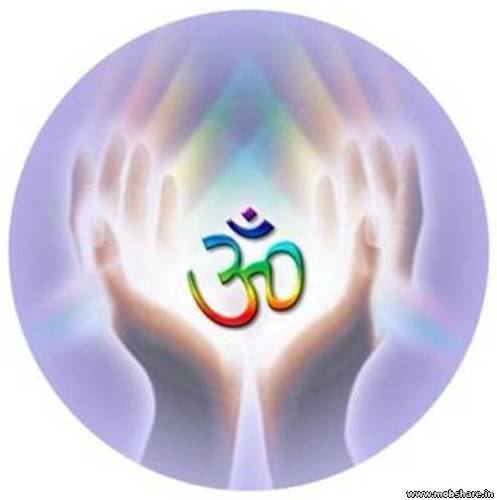Tithi (Date)
This festival, unlike other Hindu festivals, is not dependent on the position of the moon, but on position of the sun. On this day, the sun enters the zodiac sign of Capricorn. To compensate for the difference that occurs due to the revolution around the sun, every eighty years the day of sankrant is postponed by one day. In the present period Makar-sankrant falls on 14th January.History
Sankranti is considered a Deity. According to a legend Sankranti killed a demon named Sankarasur.The day followed by Makar sankrant is called Kinkrant or Karidin. On this day, the female deity (devi) slayed the demon Kinkarasur.Information
Information on Sankranti is available in the Panchang: The Panchang (Hindu Almanac) provides information on the form, age, clothing, direction of movement etc. of Sankranti. This information is appropriate to the changes taking place in Her according to time. He who is touched by Goddess Sankranti gets destroyed.Importance
The northward movement of the sun begins on this day. The period from Karkasankrant (the passage of the sun into the zodiac sign of Cancer) to Makarsankrant is called the dakshinayan. A person who dies in the dakshinayan period has a greater chance of going to Yamalok (southward region), than one who dies during uttarayan (northward revolution). Importance from the point of view of spiritual practice: On this day, from sunrise to sunset, the environment has more chaitanya (Divine conscious-ness); hence those doing spiritual practice can benefit from this chaitanya.Methods of celebration
 Applying the Kumkum between eye-brows |
Offering: Importance of making an offering during an auspicious period: The period from Makarsankrant to Rathsaptami is an auspicious period. Any donation and meritorious deeds in this period prove more fruitful.
 |
1. Importance of a gift: Giving a gift to another woman amounts to surrendering to the Divinity in the other, through body, mind and wealth. Since the period of sankrant is favourable for spiritual practice, a gift given during this period results in bestowal of Divine grace and the jiva (embodied soul) gets the desired fruit.
 |
Importance of sesame seeds - Using sesame seeds eliminates sins: On this day those who apply sesame seed oil and utane to the body, bathe in water mixed with sesame seeds, drink water mixed with sesame seeds, perform a sacrificial fire, make an offering of sesame seeds and make similar use of sesame seeds, are liberated of all sins.
Importance according to Ayurved: Since sankrant falls in winter, consuming sesame seeds is beneficial.
Importance according to Spirituality:
1. Since sesame seeds have a greater ability to absorb and emit sattva frequencies, consuming tilgul helps improve spiritual practice. Distributing tilgul to one another results in an exchange of the sattva component.
2. Using sesame seeds in shraddh prevents demons from bringing obstacles during the rite.
Forbidden acts!
During the period of sankrant, brushing teeth, talking harshly, cutting trees or grass and acts provoking sexual urges should be avoided.
Do not fly kites!
Today, when the Nation and Dharma are in peril, flying kites for the sake of entertainment is akin to, 'Nero playing the fiddle while Rome burnt'. If the time spent on flying kites is used for the development of the Nation, it will make it progress faster; and if used for spiritual practice and missions related to Dharma, then society and the individual will benefit.
Culture & Festivities

This festival is celebrated differently in different parts of the country.
Uttar Pradesh:
In Uttar Pradesh, Sankrant is called ‘Khichiri’. Taking a dip in the holy rivers on this day is regarded as most auspicious. A big one-month long ‘Magha-Mela’ fair begins at Prayag (Allahabad) on this occasion. Apart from Triveni, ritual bathing also takes place at many places like Haridvar and Garh Mukteshwar in Uttar Pradesh, and Patna in Bihar.Bengal:
In Bengal every year a very big Mela is held at Ganga Sagar where the river Ganga is believed to have dived into the nether region and vivified the ashes of the sixty thousand ancestors of King Bhagirath. This mela is attended by a large number of pilgrims from all over the country.Tamil Nadu:
In Tamil Nadu Sankrant is known by the name of ‘Pongal’, which takes its name from the surging of rice boiled in a pot of milk, and this festival has more significance than even Diwali. It is very popular particularly amongst farmers. Rice and pulses cooked together in ghee and milk is offered to the family deity after the ritual worship. In essence in the South this Sankrant is a ‘Puja’ (worship) for the Sun God.Andhra Pradesh:
In Andhra Pradesh, it is celebrated as a three-day harvest festival Pongal. It is a big event for the people of Andhra Pradesh. The Telugus like to call it 'Pedda Panduga' meaning big festival. The whole event lasts for four days, the first day Bhogi, the second day Sankranti, the third day Kanuma and the fourth day, Mukkanuma.Karnataka:
In Karnataka, the festival is marked by visiting one's friends and relatives to exchange greetings, and by the preparation of a dish called Ellu (made with sesame seeds, coconuts, sugar blocks, etc). A common custom found across Karnataka is the exchange of sugarcane pieces and Ellu with one's neighbors, friends and relatives. In Karnataka, Pongal is known as 'Sankranti', and cows and bullocks are gaily decorated and fed 'Pongal'- a sweet preparation of rice. Special prayers are offered. In the evening, the cattle are led out in procession to the beat of drums and music. In the night a bonfire is lit and the animals are made to jump over the fire.Makar Sankranti is marked by men, women and children wearing colorful clothing; visiting near and dear ones; and exchanging pieces of sugarcane, a mixture of fried til, molasses, pieces of dry coconut, peanuts and fried gram. On this auspicious day, people in Karnataka distribute Yellu and bella (Sesame seeds and Jaggery) and greet with the words " “Ellu bella thindu, Olle Maathu Aadu” (Eat sesame seeds and speak only good). The significance of this exchange is that sweetness should prevail in all the dealings.
Maharashtra:
 Ornaments made of sugar balls |
Gujarat:
In Gujarat Sankrant is observed more or less in the same manner as in Maharashtra but with a difference that in Gujarat there is a custom of giving gifts to relatives. The elders in the family give gifts to the younger members of the family. The Gujarati Pundits on this auspicious day grant scholarships to students for higher studies in astrology and philosophy. This festival thus helps the maintenance of social relationships within the family, caste and community. Kite flying has been associated with this festival in a big way. It has become an internationally well-known event.Punjab:
In Punjab where December and January are the coldest months of the year, huge bonfires are lit on the eve of Sankrant and which is celebrated as "LOHARI". Sweets, sugarcane and rice are thrown in the bonfires, around which friends and relatives gather together. The following day, which is Sankrant, is celebrated as MAGHI. The Punjabi's dance their famous Bhangra dance till they get exhausted. Then they sit down and eat the sumptuous food that is specially prepared for the occasion.Kerala:
The 40 days anushthana by the devotees of Ayyappa ends on this day in Sabarimala with a big festival.Bundelkhand:
In Bundelkhand and Madhya Pradesh this festival of Sankrant is known by the name ‘Sakarat’ and is celebrated with great pomp & merriment accompanied by lot of sweets.Tribals of Orissa:
Many tribals in our country start their New Year from the day of Sankrant by lighting bonfires, dancing and eating their particular dishes sitting together. The Bhuya tribals of Orissa have their Maghyatra in which small home-made articles are put for sale.Assam:
In Assam, the festival is celebrated as Bhogali Bihu.Coastal Region:
In the coastal regions, it is a harvest festival dedicated to Indra.Reference: http://www.vmission.org/hinduism/festivals/sankranti/













No comments:
Post a Comment